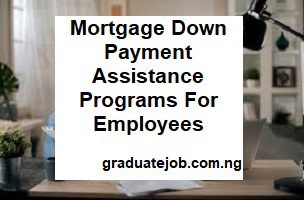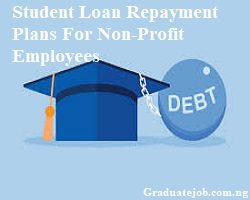Do you want to know more about mortgage down payment assistance programs for employees on how it works? Then stick to this article.
Mortgage-down assistance programs for employees are a benefit open to all full-time, and the Housing Authority employees.
Are you ready to become a homeowner, but don’t have sufficient funds in the bank for a down payment, there’s some good news. You can qualify for down payment assistance grants and loans.
Also, these programs are available from the federal government, approved banks, and nonprofit housing agencies.
In this article, you will learn how down payment assistance works if you are eligible for money to help you buy a home as soon as possible.
READ MORE: EDPAP: Employee Down Payment Assistance Program
What Is Mortgage Down Payment Assistance?
Mortgage down payment assistance is money that is provided to consumers to help them cover upfront cash required by the lender to buy a home.
Moreover, these funds typically come from federal and state housing agencies, banks and local non-profit housing authorities in the form of grants or low or non-interest-rate loans.
Essential things to know about this mortgage down payment assistance loan:
- It will cover 100% of the cost of a home.
- The money is always used toward the down payment requirement of a mortgage.
- The funds will not come directly from the federal government- it’s provided by state and municipal governments in your area.
- The U.S. Department of Housing and Urban Development (HUD) provides funding for and information about many DPA programs offered across the country.
How Does It Work?
The process for getting down payment assistance varies depending on the program you apply for.
However, you’ll need to be eligible for the mortgage regardless of which DPA program you choose. This means you’ll need to:
- You will need to credit scores that meet the program guidelines.
- Verification of your income and employment history.
- Verify your total debt is not too high for the program requirements.
- You will need to get an appraisal to verify the value of the home.
- It will be fully approved for your mortgage before receiving down payment assistance.
READ MORE: Down Payment Assistance Program
Who Is Eligible for Down Payment Assistance?
There are more than 3,000 down payment assistance programs available nationwide. As the majority of DPA programs target first-time home buyers.
Federal DPA programs, like the proposed $25,000 Down Payment Toward Equity Act, assist lower-income first-time buyers and can include additional eligibility criteria.
For instance, the Good Neighbor Next Door program is limited to teachers, nurses, law enforcement members and EMTs. Some other programs can require home buyers to live in their new home for 5 years at a minimum.
For the state and local levels, down payment assistance programs are often geography-based and available to buyers in specific cities, communities and neighborhoods only. Down payment assistance programs aren’t meant to replace a buyer’s primary mortgage.
Additionally, the DPA programs enhance a buyer’s mortgage to make owning a home affordable. Therefore, to be eligible for down payment assistance, a home buyer must also be eligible for their mortgage.
Types Of Down Payment Assistance for Employees
1. Cash Grants for Your Down Payment
Cash grants account for the majority of the down payment assistance programs. The typical first-time home buyer cash grant award is around $10,000.
Also, it doesn’t require home buyers to pay it back. However, grant programs are meant to build community and foster economic growth, in which they contain a 5-year clause that States that the buyer must live in the home for five years.
2. Closing Costs Credits
Closing cost credits are cash grants, paid at closing to reduce the cash required to get a home. It can be applied to mortgage closing costs, real estate taxes, title fees and any other costs associated with buying a home.
When you receive the closing cost credits as a home buyer, you are not expected to repay them. Some programs, moreover, require buyers to maintain residence for 36 months, at least.
3. Interest Rate Reductions
Some cities make homeownership more affordable by subsidizing low-interest rates for home buyers through cash grants for mortgage discount points.
Moreover, mortgage discount points are a one-time, up-front fee paid at closing in exchange for a lower interest rate. The discount point costs one paper center of your loan size and center over your rate by 0.25 percentage points.
4. Property Tax Bill Credits
Property tax bill credits and tax reductions are a variation on down payment assistance. It is available for all home buyers not just first-timers.
Moreover, Tax bill programs award tax abatements and tax relief to home buyers in some designated zones of a city. Furthermore, buyers will receive favorable, long-term tax treatment, lowering their tax bill and saving money.
Additionally, some states and countries issue mortgage credit certificates for up to $2,000 that will offset local property tax bills dollar-for-dollar.
5. Down Payment Loans
The least common form of down payment assistance is the interest-free down payment loan. Interest-free down payment loans are secured as liens on your home and don’t require a monthly payment. Down payment loans are repaid from your home sale proceeds when you sell your home or you decide to refinance it.
READ MORE: Mortgage Insurance Options For Borrowers With Student Loans
Conclusion
Mortgage down payment assistance programs for employees is available to most U.S. home buyers and buyers will consider them when they are available. The down payment assistance makes the home affordable and helps renters achieve their dream.






